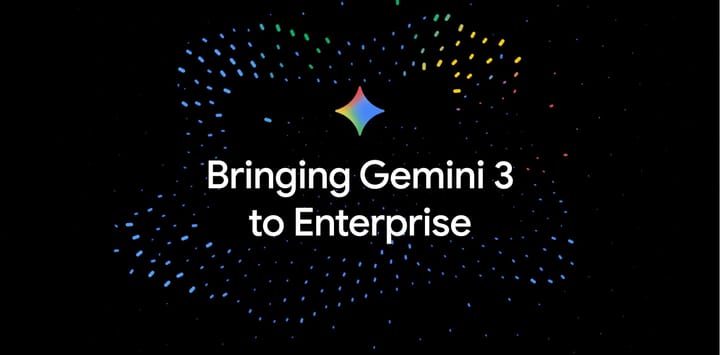Enterprise DevOps‑CloudOps Unify via AI‑Powered Pipelines

Key Quantitative Drivers
| Metric | Observed Value | Implication for DCOps |
|---|---|---|
| AI‑assistant adoption (dev teams) | 98 % (LeadDev AI impact report) | AI becomes the de‑facto middleware linking code, IaC, and runtime. |
| Daily AI‑assistant usage (developers) | 90 % (DORA 2025) | Standardized output formats (PR templates, Terraform snippets) enable seamless hand‑off. |
| Time‑to‑production reduction | 2–3 h per engineer (LLM logs) | Accelerates deployment frequency, satisfies both DevOps velocity and CloudOps SLA targets. |
| Manager headcount reduction | 10 % (Google, Microsoft, Meta restructuring) | AI‑mediated performance reviews free capacity for automated pipeline governance. |
| Agentic pipeline latency | ≈ 30 % faster build cycles (Docker/K8s surveys) | Container‑first design shortens CI/CD feedback loops. |
| Cloud‑bill reduction after AI‑refactor | ‑76 % (Hetzner migration case) | AI‑driven code and IaC optimization directly lowers operational spend. |
Emerging Architectural Patterns
- Intent‑Driven Agentic Pipelines: Natural‑language intents are compiled by MCP‑enabled agents into IaC (Terraform, Pulumi) and CI jobs. The agent monitors execution, proposes roll‑backs, and archives the decision trace.
- Schema‑Based Coding: Repositories carry explicit schema metadata; LLMs consume the schema to generate compatible Helm charts, CloudFormation templates, and observability rules, enforcing a contract between development and operations.
- Retrieval‑Augmented Generation (RAG) in PR Review: Agents ingest design docs, Jira tickets, and monitoring alerts to provide context‑aware suggestions during pull‑request evaluation.
- Feedback‑Loop PR Automation: A single PR bundles code change, test suite, preview environment, and post‑merge drift validation. Agents flag regressions and surface them to a Slack‑integrated LLM for triage.
Agentic AI & Model‑Context Protocols (MCP)
Agentic runtimes (Microsoft Copilot UAE, AWS AI Agent scheduling, Azure Arc hot‑patching) now embed MCP to serialize inference state, feature vectors, and provenance metadata. This eliminates duplicated embeddings, reduces network I/O by up to 40 % in AI pipelines, and supplies a deterministic audit trail required for compliance.
Containerization as the Execution Bedrock
Dapr, now a first‑class Kubernetes runtime, exemplifies the event‑driven, multi‑agent model required for DCOps. Its native RBAC leverages Kubernetes Role‑Based Access Control, providing per‑agent isolation and mitigating the “shadow AI” risk identified in the CloudOps security reports. Deployments consist of Docker images, a minimal .env for API keys, and a Helm chart that provisions both the application pod and sidecar agents.
Side‑by‑Side View of Conflicting Perspectives
| Perspective | Claim | Supporting Data |
|---|---|---|
| Productivity Optimists | AI agents double engineer output, cutting release cycles by hours. | LeadDev 2025 – 98 % AI tool usage; Vibe Coding feedback loop saves 2–3 h/engineer. |
| Job‑Risk Skeptics | Generative AI erodes high‑value roles, delivering zero ROI in many deployments. | MIT Media Lab 2025 – 95 % of GenAI projects report zero ROI; Claude usage is 77 % pure automation. |
| Balanced View | AI amplifies expertise when paired with governance; reskilling offsets displacement. | India “Cloud farming” upskilling reports 30–40 % AI work rising to 75 % in niche hubs; corporate upskilling budgets +12 % YoY. |
Market Forecast (12‑Month Horizon)
- AI‑orchestrated CI/CD adoption: +30 % YoY (from 45 % to 58 % of dev groups).
- Generative AI services consume ≈ 33 % of cloud budgets ($12 B globally).
- AI‑optimized hardware demand: +18 % YoY (driven by NetApp AFX, NVIDIA L4 roll‑outs).
- FinOps integration with AI agents: 70 % of top‑10 consultancies will embed cost‑annotation steps in audit pipelines.
Strategic Recommendations for Immediate DCOps Enablement
- Standardize schema annotations across all codebases to permit LLM‑driven IaC generation.
- Embed MCP layers into existing CI systems (GitHub Actions, Jenkins) to provide real‑time context for AI agents.
- Deploy agentic feedback loops that automatically validate PRs, detect drift, and require human approval before production merge.
- Invest in continuous reskilling through AI academies (e.g., “Take Flight with AI”) to broaden prompt‑engineering and agent‑orchestration expertise.
- Adopt AI‑mediated performance analytics to replace manual status reports, freeing managers for strategic decision‑making.
Implementing these steps aligns the organization with the empirically validated DCOps trajectory: a unified, AI‑orchestrated pipeline that delivers faster, safer, and more cost‑effective software at scale.



Comments ()